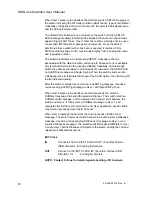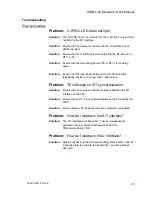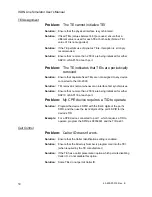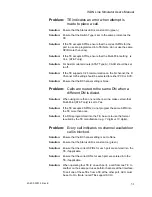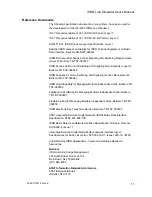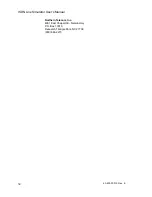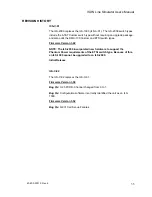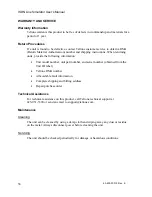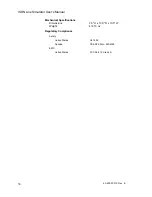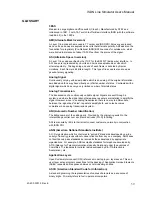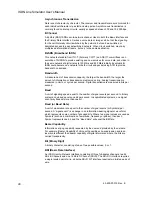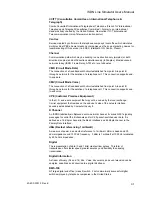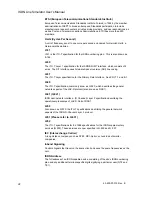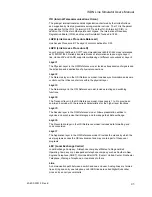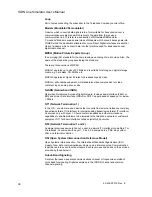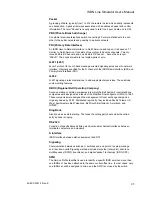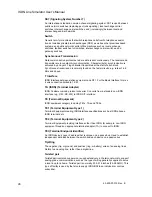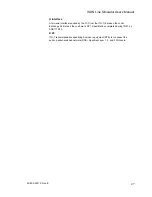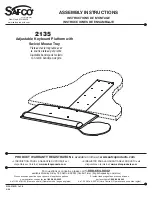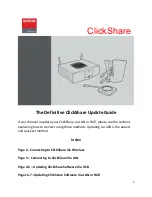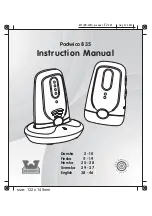
ISDN Line Simulator User’s Manual
40-400-00012, Rev. E
41
CCITT (Consultative Committee on International Telephone &
Telegraph)
Comite Consultatif International Telegraphe et Telephone (French for “International
Telephone and Telegraph Consultative Committee”). Formerly, an international
standards body charted by the United Nations. Now called ITU-T (International
Telecommunication Union-Telecommunication sector.)
Centrex
Service created by software in the telephone company’s local office which simulates
multiple virtual PBXs. Some telephone companies use their own marketing names for
local marketing of this service (i.e. ESSX, Intellipath, IIN, Centro, Plexar).
Channel
Communication path which may be sending in one direction only (simplex) or both
directions (duplex) and both directions simultaneously (full duplex). Most advanced
networks today (ISDN, Frame Relay, ATM, etc.) are full duplex.
CMD (Circuit Mode Data)
The connection of a fixed bandwidth circuit established from point A to point B
through a network for the duration of a telephone call. This connection supports end-
to-end data.
CMV (Circuit Mode Voice)
The connection of a fixed bandwidth circuit established from point A to point B
through a network for the duration of a telephone call. This connection supports end-
to-end voice.
CPE (Customer Premises Equipment)
In the U.S., end-user equipment that may not be owned by the local exchange;
Carrier equipment that resides on the end user’s side of the network interface
boundary established by Computer Inquiry II.
D Channel
An ISDN Statistically-multiplexed user-to-network channel. It carries Q.931 signaling
messages to control the B channels and/or X.25 packet-switched user data. It is
defined as a 16 Kbp/s channel in the Basic Interface and 64 Kbp/s channel in the
Primary Rate Interface.
dBm (Decibel referencing 1 milliwatt)
A measure of power, as a decibel reference to 1 milliwatt. dBm is based on 600
ohms impedance and 1000 Hz frequency. 0 dBm is 1 milliwatt at 1000 Hz terminated
by 600 ohms impedance.
Digital
The representation of data (0 and 1 bits) via electrical pulses. This form of
transmission offers faster speed, greater accuracy and flexibility than analog
transmission.
Digital Information
A stream of binary (0’s and 1’s) bits. Voice, documents, and even television can be
samples, quantized and converted to a digital bit stream.
DMS-100
NT large digital end office (class 5) switch. First commercially successful digital
switch employed by telephone companies in the United States.


